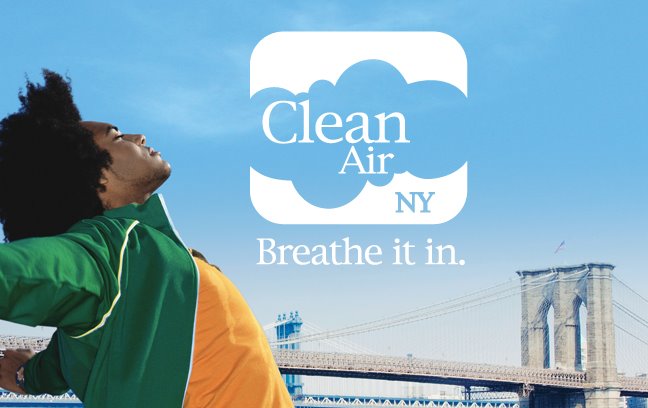We at Clean Air NY continue to tell New Yorkers to help reduce ground-level ozone pollution, but what exactly is it and where does it come from?
Vehicular Air Pollution: What Is It and Where Does It Come From?
Motor vehicles play a major role in air pollution. They are the single largest contributor of the precursors of ground-level ozone, which is a significant urban pollutant. Ozone is created from burning fossil fuels and vehicle use and contributes to cardiovascular and respiratory problems.
Here's the Science
Motor vehicles generate three major pollutants: hydrocarbons, nitrogen oxides and carbon monoxide.
- Hydrocarbons react with nitrogen oxides in the presence of sunlight (ultraviolet radiation) to form ground-level ozone
- Nitrogen oxides also help form acid rain.
- Carbon monoxide, a colorless, odorless, deadly gas, can impair mental and visual functions and have other negative effects at high levels of exposure.
Pollutants are released as a result of vehicle use when:- Fuel is burned in the internal combustion engine and the combustion products are emitted through the tailpipe.
- Heat causes fuel to evaporate from under the hood and throughout the fuel system. Hot, sunny days and engines warmed by running provide heat to vaporize fuel into the air.
- Cars refuel at service stations, where gasoline vapors escape into the air.
Ground-Level Ozone Pollution and Your Health
Short-term exposure to elevated levels of ozone can cause eye, nose and throat irritation, respiratory symptoms and decreases in lung function. The respiratory symptoms can include shortness of breath, chest pain and coughing. An increased risk of developing asthma has been found among students who likely experienced long-term elevated ozone exposure because they participated in athletic programs in areas with high ozone levels. (
New York State Department of Health)
Elevated ozone levels mainly occur between May and September. It’s important to know when they happen, so be sure to sign up to receive Air Quality Action Day Updates from Clean Air NY by texting AIR to 42269 or by visiting
CleanAirNY.org.

 image by
image by 

